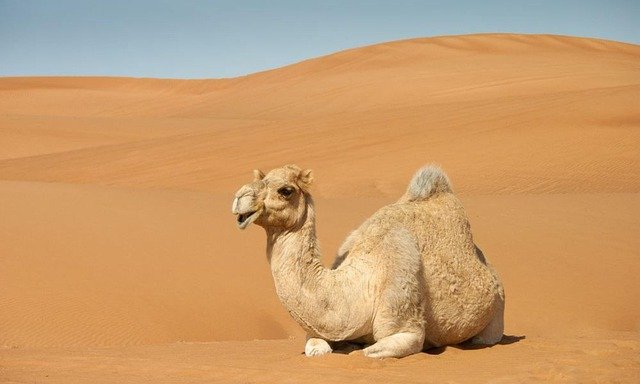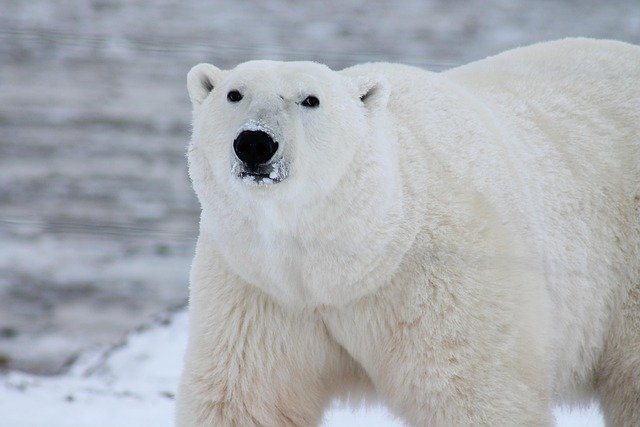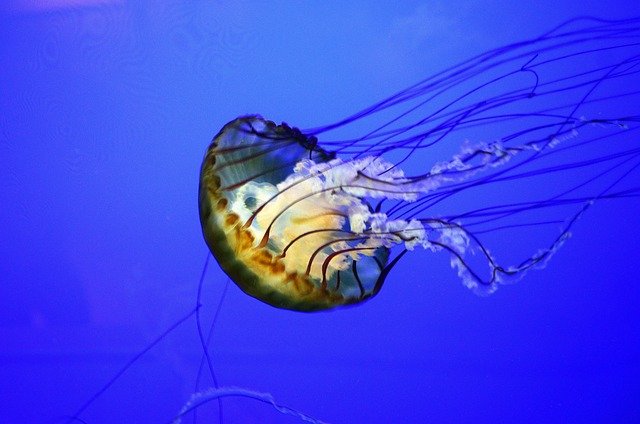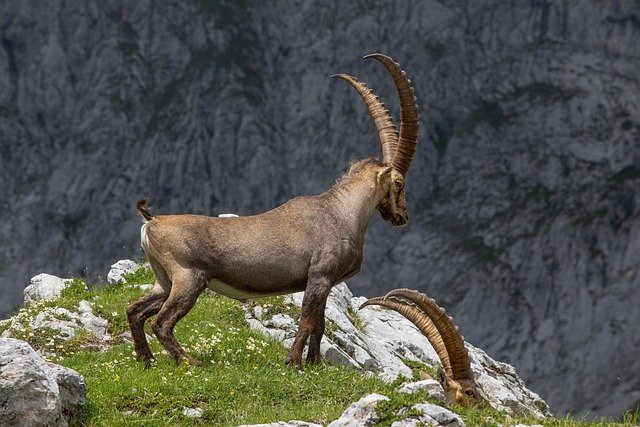Have you ever wondered how some animals can live in places that seem too hot, too cold, or too dry for anything to survive?
Like camels walking across burning deserts…
Or penguins standing on ice all day…
Or fish swimming deep in the ocean where there’s no light at all?
It seems impossible. But it’s not.
Different species of animals survive in these wild places because their bodies are built for it. They have special features—called adaptations—that help them live, stay safe, and find food, even in the toughest spots on Earth.
In this article, we’re going to explore how animals live in extreme places like deserts, icy lands, deep oceans, and high mountains. You’ll see how their bodies help them do amazing things. And the more you learn, the more you’ll realize—nature is really, really smart.
Are you ready to explore the wildest places on Earth—and meet the animals who call them home?
🏜️ Life in the Desert: Hot Days, Cold Nights, and No Water
The desert might look empty at first glance. But look a little closer—and you’ll find life. Strange, quiet, clever life.
But first, what exactly is a desert?
A desert is a place where there is very little rain. That’s it. Some deserts are hot. Some deserts are actually cold. But all deserts are dry. That means water is hard to find, and the ground is usually dry and dusty.
Let’s talk about hot deserts—the ones with blazing sun, sand dunes, and sky that stretches forever.
☀️ Hot Days That Burn
During the day, the sun shines strong. The sky has almost no clouds to block the sunlight. So everything—sand, rocks, even the air—heats up fast.
It gets so hot that metal can burn your hand with the heat. The ground can cook an egg. And there’s almost nowhere to hide.
In most places, people would drink water, turn on a fan, or go indoors to cool down.
But in the desert? There’s no tap. No fridge. No shade. So animals that live there must have special ways to stay cool and keep water inside their bodies.
❄️ Cold Nights That Surprise
Now here’s something most people don’t expect about deserts: when the sun goes down, it doesn’t just get a little cooler—it gets freezing.
Why?
Because dry places don’t hold heat well. Once the sun disappears, the warmth leaves quickly. The air turns cold, and the sand becomes chilly too.
Some deserts drop below zero degrees at night—cold enough to see your breath!
That means desert animals need to handle two opposites: burning heat in the day, and freezing chill at night. It’s like living in two seasons every single day.
💧 No Water Anywhere
The biggest challenge in the desert is not the sun or the cold. It’s the dryness.
Rain might come only a few times a year. And when it does fall, it’s often gone in minutes—soaked into the sand or dried up by the sun.
There are no lakes, no rivers, no puddles. Sometimes, even plants are hard to find.
So animals must:
- Save every drop of water they get
- Make their own water from the food they eat
- Or hide during the hottest times to use less energy
They have to be super smart with water. Just like people in a desert town store water in tanks, desert animals have body parts that act like built-in storage tanks.
🌿 Life Is Quiet, But It’s There
In the middle of the day, a desert can seem silent and still. But that doesn’t mean it’s empty.
Most desert animals are active at night, when it’s cooler. During the day, they rest underground, under rocks, or inside shady cracks.
When the sun goes down, that’s when they come out—looking for food, moving quietly, always watching for danger.
The desert may look harsh… but it’s full of life. And every living thing there has a secret weapon: a smart way to survive.
🐫 Camels – The Desert Giants with Built-In Survival Kits

Camels are big, slow-moving animals with long legs and humps on their backs. People often think those humps are full of water—but they’re not. They’re full of fat.
That fat is like a built-in lunchbox. When camels don’t find food, their body uses the fat for energy. That means they can walk for days or even weeks without eating. All these features help them to survive in such extreme ecosystem.
But that’s not all.
- Camels don’t sweat much, even in the heat. Sweating uses up water, so by not sweating, camels keep more water inside their bodies.
- Their noses are super smart. When camels breathe out, most animals lose a little water with each breath. But camels have special nose passages that catch that water and return it to the body.
- Their eyelashes are long and thick. These protect their eyes from sandstorms. They even have an extra clear eyelid that acts like a “sand shield.”
- Their feet are wide and soft, so they don’t sink into the sand like people do. Their feet are perfect for walking across dry, loose land.
Camels have every tool they need built right into their bodies. That’s why they are known as the kings of the desert.
🦎 Desert Lizards – Tiny Warriors with Tough Skin
In the middle of a hot desert, you might see something small and fast darting across the sand. That’s probably a desert lizard.
Lizards are cold-blooded, which means they get heat from the sun. But even they can’t take too much heat. So what do they do?
- They hide underground during the hottest part of the day. The sand below the surface stays cooler. Some dig burrows; others hide under rocks.
- Their scaly skin acts like a barrier. It keeps moisture from escaping, like a lid on a bottle.
- They have strong, fast legs that help them zip across the sand before it burns their feet.
- Many desert lizards are brown or sandy-colored, so they blend in with the ground. That makes it hard for birds or snakes to spot them.
These lizards might be small, but they’re super smart survivors—quiet, fast, and always one step ahead of the heat.
🐭 Kangaroo Rats – Tiny, Thirstless Champions
Kangaroo rats live in North American deserts. They’re called “kangaroo” rats because they hop on their back legs like little kangaroos.
But here’s what makes them amazing: they hardly ever drink water.
Seriously.
Instead, their bodies are built to save water in every way possible.
- When they eat seeds or dry plants, their body pulls out the tiny bits of water inside. Even dry food has some moisture.
- They make super dry pee and very little sweat, so almost no water is wasted.
- They stay in their cool burrows during the hot day and only come out at night, when it’s cooler.
Their homes are cool, dark tunnels under the sand, where the heat can’t reach them. This helps their bodies stay calm and saves energy too.
Even without lakes, rivers, or rain, kangaroo rats live full lives just by using the water inside their food. That’s a brilliant adaptation.
In the desert, life is tough. But every animal that lives there is tough too—and smart. Their bodies help them survive without much food, with very little water, and under the hot sun. They teach us that with the right tools and a little cleverness, anything is possible.
❄️ Life in the Cold: Ice, Snow, and Freezing Temperatures

Now let’s travel far from the dry, dusty deserts… to a land of snow, wind, and ice. A place where your breath turns to frost in seconds, and even the sea can freeze.
Welcome to the coldest places on Earth—the Arctic (north) and Antarctica (south).
These are places where nothing is easy. There’s almost no fresh food. No trees. No shelter. Just endless white ground, bitter winds, and days (or even months) with no sunlight at all.
But somehow, animals live here.
How?
Because they’ve learned to survive with what they have. Their bodies are like winter coats, snow boots, and survival kits all rolled into one. Let’s look at how they do it.
🌬️ The Cold Is Not Just Cold—It’s Dangerous
In the Arctic or Antarctica, it’s not just chilly like a winter morning. It’s bone-deep cold.
Temperatures often drop to -40°C or colder. The wind makes it feel even worse. Just being outside for a few minutes without protection can freeze your skin.
Water turns to ice. Food is buried under snow. The sun disappears for months during the long, dark winters.
So for an animal to live here, it must be strong, smart, and prepared.
🐧 Penguins – The Icy Marchers
Let’s start with one of the best-known cold survivors—the penguin.
Penguins live in Antarctica, where temperatures are some of the coldest on the planet. But they don’t seem to mind.
Why?
Because their bodies are built for cold:
- Their feathers are tightly packed and waterproof, so snow and icy water don’t soak them.
- Under their feathers, they have a layer of blubber, or fat, which keeps them warm.
- Penguins stand close together in giant groups, especially during freezing winters. This keeps everyone warmer. The ones on the outside take turns moving into the middle.
Even penguin babies are kept warm by tucking under their parent’s belly while the adult stands on the ice. The penguin’s body heat keeps the chick safe—even during icy winds.
🐻 Polar Bears – Walking on Ice, Swimming in Freezing Water
At the top of the world, in the Arctic, lives another champion of the cold—the polar bear.
Polar bears are huge, strong, and surprisingly quiet. They hunt alone across frozen seas and icy ground.
Here’s what makes them cold-weather kings:
- Their thick, white fur traps heat close to their body. It also helps them blend into the snowy land so they can sneak up on seals.
- Beneath that fur, they have black skin that soaks up sunlight, even on cloudy days.
- Their blubber layer is like an inner sleeping bag, keeping their insides warm even when they swim in icy water.
- Their paws are wide and covered in fur, like snowshoes. This keeps them from slipping and helps them walk on soft snow or thin ice without sinking.
Polar bears don’t hibernate like other bears. They stay awake and active, walking long distances to hunt. They’re always moving, always looking—and always ready for the cold.
Seals – The Deep Divers of the Ice World
Seals spend much of their time in freezing oceans. But even with ice on the surface, the sea is full of life.
Here’s how seals make it work:
- They have thick blubber under their skin, which keeps their body heat in.
- Seals can hold their breath for a long time—sometimes over 30 minutes! This helps them dive deep where they hunt fish.
- When they rest on the ice, they stay still to save energy. Their body doesn’t waste heat, and their round shape keeps cold air from touching too much of their skin.
Seals also have special whiskers that help them feel movement underwater, even in the dark.
🐇 Arctic Foxes and Hares – Small, Fast, and Fluffy
Not all cold-weather animals are big. Some are small and speedy—like the arctic fox and arctic hare.
They don’t have blubber, but they have:
- Thick fur that covers their whole body—even their feet!
- Short ears and snouts to stop heat from escaping
- The ability to change fur color with the seasons—white in winter to match snow, brown or gray in summer to blend with rocks and dirt.
They move quickly, dig in the snow to find food, and curl up tight when the wind gets bad.
Even the tiniest animals in cold places have clever tools to keep warm.
In freezing lands where the sun disappears and the cold never stops, animals survive by staying warm, moving smart, and making the most of every single drop of energy. Each and every animal is very vital to maintain the food chain in the coldest places on earth.
They don’t complain. They don’t give up.
They just adapt—and keep going.
That’s the magic of nature.
🌊 Life in the Deep Ocean: Darkness, Pressure, and Cold

The deep ocean is one of the most mysterious places on Earth. It’s not just deep—it’s so deep that light from the sun can’t reach it. That means it’s completely dark all the time.
If you dive down far enough, the water turns from light blue… to dark blue… to black. No light. No plants. No warm sun. Just cold, dark water, stretching for miles in every direction.
But what makes the deep ocean ecosystem extreme isn’t just the darkness. It’s also:
- Freezing cold temperatures
- Crushing pressure from all the water above
- And almost no food
So how do animals live here?
They don’t just survive. They’ve adapted in wild and wonderful ways. Let’s explore the deep.
🐙 Giant Squid – The Deep Sea Ninja
The giant squid is one of the biggest creatures in the deep sea. It can grow as long as a school bus! But it’s also very hard to find.
Why?
Because it lives so deep that we almost never see it. Most giant squids are only seen when they wash up on beaches or get caught on rare underwater cameras.
But we do know this:
- They have giant eyes—the biggest in the animal kingdom. These eyes help them spot even the tiniest flickers of light in the pitch-black ocean.
- Their bodies are soft and bendy, so they don’t break under pressure. In the deep sea, the water above is so heavy it could crush a submarine. But the squid? It glides through easily.
- They use a special way to move—by sucking in water and pushing it out quickly. It’s called jet propulsion, and it helps them escape fast if something tries to attack.
Even though we don’t know everything about them, giant squids are a perfect example of how animals can be big, bold, and still stay hidden.
🐟 Anglerfish – The Glowing Trickster
Imagine swimming in total darkness… and seeing a tiny light floating ahead. You get closer, curious—and suddenly, SNAP!
You’ve been eaten by an anglerfish.
Anglerfish are small, creepy-looking fish with a glowing lure that hangs over their head. This light isn’t just for show. It’s their hunting tool.
Here’s what makes them so cool:
- They create their own light using bioluminescence—tiny bacteria in their body that glow.
- They wave their glowing lure to attract prey—other fish that think it’s food.
- Their bodies are soft and stretchy, so they can swallow prey almost as big as themselves!
- They have huge jaws with sharp teeth, even though they move very slowly.
In a place where it’s hard to find food, anglerfish use patience and light to fool their dinner into coming to them.
🐛 Deep-Sea Tube Worms – The No-Eyes, No-Mouth Wonders
This one is going to sound weird… but it’s true.
There are animals in the deep ocean that don’t eat at all. They don’t have mouths. They don’t have eyes. Yet they live in one of the harshest spots on Earth—right next to underwater volcano vents that shoot out hot, toxic chemicals.
These are called tube worms.
Here’s how they stay alive:
- They have bacteria inside their bodies that turn chemicals from the vents into food. That’s called chemosynthesis—a bit like photosynthesis, but without light.
- They grow in long, white tubes that protect them from heat and pressure.
- Even though they don’t move, they grow very fast and live in huge groups.
These animals show us that life doesn’t always need sunlight. It just needs a way to turn energy into survival.
🌌 The Deep Sea Is Full of Strange Survivors
The deeper you go, the weirder it gets.
Some deep-sea animals have:
- See-through heads so they can spot prey above
- Jelly-like bodies that don’t get crushed under pressure
- Glowing spots on their bellies to hide from below
- Mouths that stretch wide open to grab whatever food comes by
Because food is so rare, animals here eat anything they can find. Sometimes that’s dead fish that drift down from above. Sometimes it’s smaller animals. Sometimes they go weeks or months without food.
These creatures don’t waste energy. They move slowly, eat rarely, and use their unique bodies to stay hidden and stay alive.
The deep ocean teaches us that we don’t need to see something for it to be real. Life is happening down there, quietly, patiently, and beautifully—far from the eyes of the world.
It’s cold. It’s dark. It’s extreme.
And it’s full of life.
🏔️ Life in the Mountains: Thin Air, Cold Winds, and Rocky Cliffs

Mountains may look beautiful from far away, but living up there is no easy task.
The air is thin, which means there’s less oxygen to breathe. The temperature is cold almost all year. The wind is sharp and fast. The ground is rocky and steep. Food is hard to find. Trees are rare. And there’s hardly any place to hide.
But still, animals live there. And not just live—they thrive.
They’ve adapted in clever ways to deal with:
- Cold weather
- Less oxygen
- Steep cliffs
- Little food
Let’s meet some of these brave mountain survivors.
🐐 Mountain Goats – The Cliff Climbers
Mountain goats don’t actually live on farms—they live on cliffs, often thousands of meters above sea level.
These goats are built for balance and climbing.
Here’s how they do it:
- Their hooves have a rough edge and soft center, kind of like built-in grip shoes. This helps them walk on sharp rocks and narrow ledges without slipping.
- Their legs are short and strong, perfect for climbing straight up or down steep cliffs.
- They have thick fur that keeps them warm in cold winds and snow.
- They move quietly and slowly, always choosing safe steps, just like careful hikers.
Mountain goats can live where even people can’t walk. They escape danger just by going higher.
🐆 Snow Leopards – The Silent Hunters of the Peaks
High in the mountains of Asia lives the snow leopard—a rare and beautiful big cat with snowy fur and sky-colored eyes.
Snow leopards are made for mountain life:
- Their fur is thick and warm, with a long fluffy tail they use like a scarf to wrap around themselves when resting.
- Their feet are wide, so they walk on snow without sinking—like natural snowshoes.
- Their lungs are built to take in more oxygen, even in thin air.
- They are excellent jumpers—able to leap across huge gaps between rocks.
- And they’re super quiet hunters. They sneak up on prey without making a sound.
Because food is hard to find, snow leopards are patient. They can walk for miles across the cold mountains just to find one meal.
🐇 Pikas – Tiny, Tough, and Always Busy
You might not expect a small animal to survive in high mountains, but the pika does it well.
Pikas are little, round animals that look like a cross between a rabbit and a mouse. They live among rocks high above the trees.
Here’s what makes them special:
- They have short ears and thick fur to keep warm and hold in heat.
- They collect grass and flowers during summer, then store it in hidden piles for winter—like tiny mountain farmers!
- They don’t hibernate, so they must prepare all their food in advance.
- They move fast and stay close to their rocks, always alert for eagles or foxes.
Even though they’re tiny, pikas are clever planners who survive through smart habits.
🐦 Birds of the Sky – Flying High and Living Light
Some birds live higher than any other animals on Earth.
For example:
- The bar-headed goose can fly over the Himalayas, where the air is very thin. Their lungs are built to pull in more oxygen with each breath.
- The golden eagle builds its nest on high cliffs and hunts from the sky, using sharp eyes to spot food far below.
- Alpine choughs, a kind of mountain crow, are great flyers that can glide and dive even in strong winds.
These birds survive not by hiding—but by riding the wind and living light.
In the mountains, every breath is harder. Every meal is earned. And every step is steep.
But animals that live there don’t give up. They adapt, stay calm, and use their smart bodies to live on the edge of the world.
How Kids Can Keep Exploring Adaptations with Debsie

At Debsie, we don’t just teach kids what animals do—we help them understand why, through fun lessons, live projects, and real experiments.
In our biology and science classes, kids:
- Build their own animal habitats
- Watch videos and animations of real animal behavior
- Join “adaptation challenges” like designing an animal that can live on a frozen planet or in a lava-filled jungle
- Learn from expert science teachers who break down big ideas into fun, simple parts
It’s not just about reading facts. It’s about thinking like a scientist, asking “why” and “how,” and seeing the world with wide, curious eyes.
No matter your child’s age—from 5 to 18—Debsie has a science class that will make them say, “Wow! I didn’t know that!”
Final Thoughts: Nature’s Smartest Survivors
Now that you’ve traveled through burning deserts, icy lands, dark oceans, and windy mountaintops, one thing should be very clear:
Animals are amazing.
They don’t just survive in extreme places—they thrive. They live in ways that seem impossible, all because of something very powerful: adaptation.
Adaptations are the special tools built into an animal’s body or behavior that help it live where no one else can. These tools are not magic, but they’re pretty close. They’re smart, simple, and shaped by years and years of nature learning what works best.
And what’s even cooler?
Every animal is different because every place on Earth is different. Cold places need warm fur. Hot places need water-saving tricks. High places need strong lungs. Deep places need soft bodies and glowing lights.
Nature knows how to solve problems.
Nature adapts.
Read Next:



